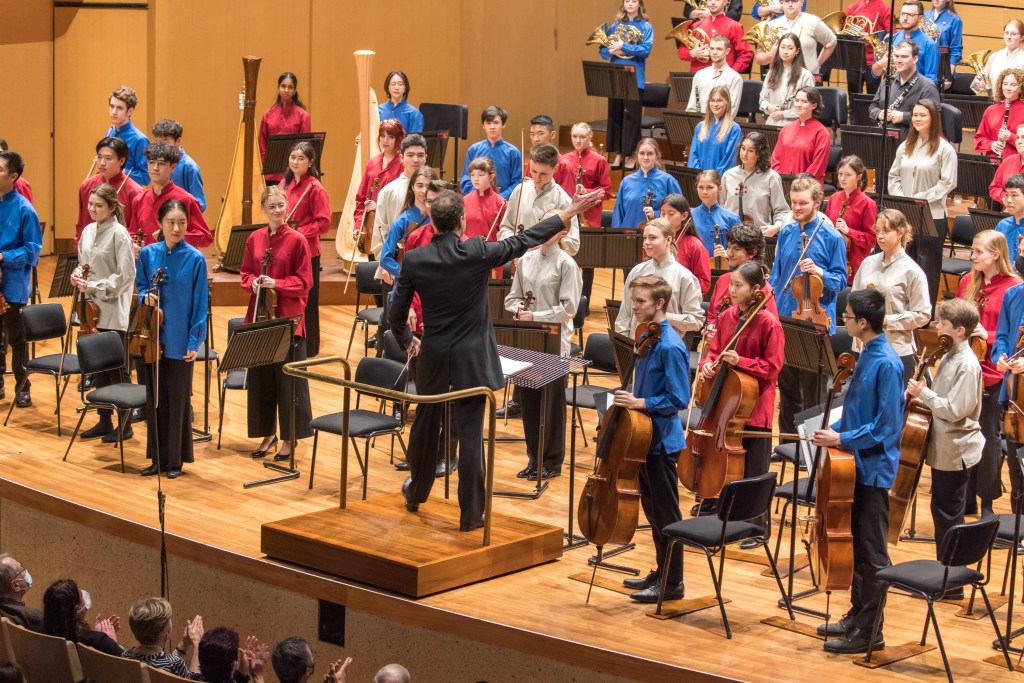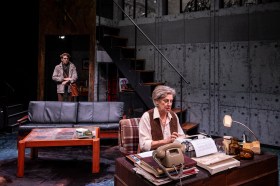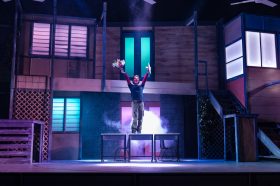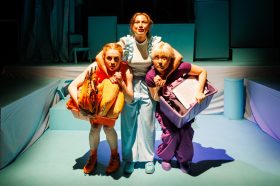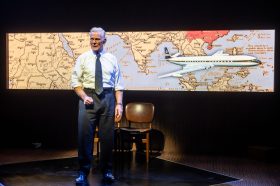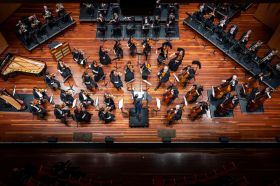It is an ambitious path for a youth orchestra, comprising students between the ages of 12 and 24, to present any of the great Mahler symphonies, given the musical complexity and the philosophic nature of the works.
Mahler’s symphonies demand not only superior technical musical skills, but also a mature understanding of his exploration of life’s big themes, focused on the perennial human struggle for meaning and our place in the universe.
The Queensland Youth Symphony (QYS), the leading ensemble of the Queensland Youth Orchestras (QYO), presented Mahler’s Symphony No.2 Resurrection in 2021 to critical acclaim. Under the guiding hand of then recently appointed Director of Music and conductor Simon Hewett, the orchestra demonstrated an excellent understanding of this major work, musically and thematically.
This year, Hewitt has chosen to build on that Mahler success by presenting the Third Symphony, at 100 minutes the longest symphony in the standard orchestral repertoire. Mahler famously stated that, ‘a symphony must contain everything, it must embrace the world’ and perhaps, more than any other symphony, his Third demonstrates just that, with its unique structure and all-encompassing themes.
The composer explores in six movements a struggle that starts in a dark and foreboding place, moving through the joys of nature to a transcendental state of harmony and tranquillity in the final bars of the magnificent last movement. Parts of the symphony are sombre and threatening, perhaps reminiscent of our current world. It certainly has elements that seem relevant to the times we live in, though fortunately it finishes on a spiritual note of hope and joy.
At 35 minutes, the long first movement is described as ‘strong and decisive’, commencing impressively with powerful and urgent horns, brass and percussion gradually dropping quietly to rumbling horns and drum beats. This was evocative of a strange threatening world. Followed by urgent trumpet calls, well delivered by Blake Humphrey and Matthew Nash, the movement merged into a colourful orchestral march, with a solo trombone adding a secondary melody that was repeated and extremely well played by Peter Kleinschmidt.
The violins added a much-needed lightness of touch, with delightful solo work by the Concertmaster, In Yi Chae. Developing into a series of wonderful musical textures, the orchestra’s ferociously fast playing was matched by slower sections, eliciting fine woodwind solos from the clarinet of Lewis Blanchard and the oboe of Shana Hoshino.
Interspersed with excellent trumpets and trombones, the rhythmic snare drums led to a finale with a repetition of the well-paced opening passage by the horns led strongly by Oscar Schmidt. It was an immensely satisfying first movement.
In the style of a minuet, the second movement entitled flowers on the meadow, was suitably melodic and graceful; its sweeping rhythms amid a palette of musical colours well delivered by woodwind and strings with strident trumpet calls.
Written as a scherzo, and based on a theme of ‘high summer’, the third movement introduced all the lushness of a summer alpine meadow. It commenced softly with slow, tingling harps and clarinet and flute solos, the latter played delicately by Katya Willett. The melodic posthorn, here positioned high in the organ loft which lent it an ethereal quality, was quite beautifully played and well-paced by Sophie Kukulies.
The short fourth movement, described as ‘slow and mysterious’, was given over to a contralto solo with its dark and sinister setting of Friedrich Nietzsche‘s Midnight Song from Also sprach Zarathustra (‘O Mensch! Gib acht! O man! Take heed!’). Deborah Humble sung this with suitable gravitas; her rich, dark mezzo, perfectly suited to the foreboding tone of the poem, delivered an evocative and brooding rendition.
The short and cheerful fifth movement of ‘three angels singing’ offered a complete change of pace. Based on his Des Knaben Wunderhorn songs (The Boys Magic Horn), Mahler introduced both a female chorus to accompany the soloist, and a separate children’s chorus.
Emily Cox AM who is Music Director of the Brisbane Chorale, trained both the women from the Brisbane Chorale, alongside students from the QYO Children’s Choir, Brisbane Boys College Choir, Brisbane Grammar School Choir and Mansfield State High School Choir, with a total of 170 choristers. They made a marvellous addition to the symphony and its fifth movement.
The final sixth movement, an adagio, described as ‘slow, tranquil and deeply felt’, is one of Mahler’s finest, and is a to his famous adagio in the Fifth Symphony. It is ravishing, heart-warming music that commenced extremely softly with beautiful, controlled playing from the darker strings; violas, celli and double basses. Sensitively managed, the violins and woodwind joined, while a perfect flute rose above the shimmering strings. A huge orchestral crescendo dropped back to the original melody with a slow build to a majestic conclusion including bold drum beats.
Conductor, Simon Hewett, was a strong guiding force throughout the concert, his crystal clear and decisive beat never wavering. He coaxed his youthful forces during the slower passages, while giving energetic leadership in the fast sections. He also perfected a well-crafted balance across the sonority of his large orchestral forces, with the multi-layered colours of the various instruments, peppered throughout with solo voices, well realised.
However, despite being very well played by the orchestra, additional violins in particular would have given an extra lushness to the final bars of the slow adagio movement.
Read: Theatre review: Jane Eyre
Hewett is to be commended on his choice of repertoire for this enormously talented group of young musicians. All in all, this was a most impressive and very enjoyable concert of one of Mahler’s great works, in an extremely polished and well delivered presentation that would stand up well in any professional orchestral offering. A major achievement for the QYS.
Mahler Symphony No.3 in D minor
Presented by Queensland Youth Orchestras
Concert Hall, QPAC, Brisbane
Conductor: Simon Hewitt
Mezzo-soprano: Deborah Humble
Chorus Master: Emily Cox AM
Violin solo – concertmaster: In Yi Chae
Trombone solo: Peter Kleinschmidt
Posthorn: Sophie Kukulies
Choir: Women from the Brisbane Chorale, QYO Children’s Choir, Brisbane Boys College Choir,Brisbane Grammar School Choir, Mansfield State High School Choir
Mahler Symphony No.3 in D minor was performed on 27 August 2022.
